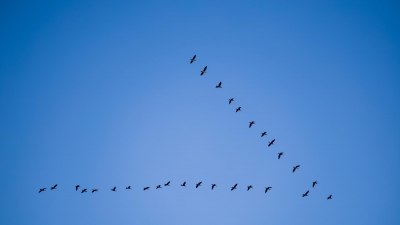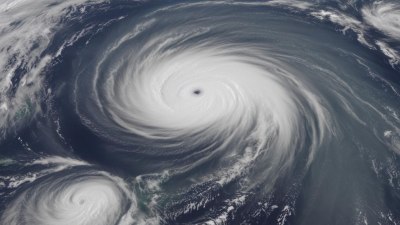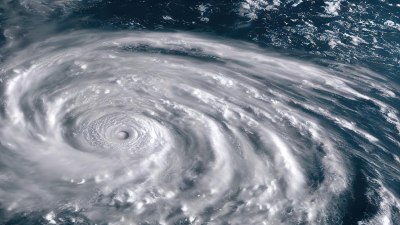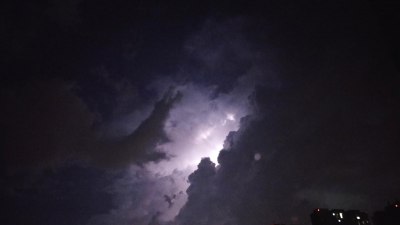The Connection Between Weather and Migrating Birds
Explore how weather influences the migration patterns of birds globally in this comprehensive article.

Image by user9227810 on Freepik
Migration is an essential component of the avian life's cycle, a phenomenon driven by various environmental factors. Among these factors, weather conditions play a critical role in dictating the timing and routes of migrating birds. Understanding the connection between weather and bird migration offers insights into ecological balance and highlights the impressive adaptability of avian species. This article delves into the complexities of how weather influences bird migration, the consequences of climate change, and the remarkable strategies employed by birds as they navigate their journeys but also what these adaptations mean for their future amidst changing environmental conditions.
The Basics of Bird Migration
Bird migration is primarily a response to seasonal changes in food availability and weather conditions. These migratory journeys can span thousands of miles, with some species, such as the Arctic Tern, embarking on round-trip migrations that take them from polar breeding grounds to wintering locations in the temperate zones or even the tropics. Various species migrate using different strategies, with some flying solo, while others migrate in flocks. Bird migration typically occurs during two main periods: spring migration, where birds head north to breeding territories, and autumn migration, where they return south to avoid the harsh winter conditions.
The Role of Weather Patterns
Weather patterns significantly influence the timing of migration. Birds often rely on changes in temperature, daylight hours, and the availability of food resources to determine the optimal time to embark on their journeys. For instance, many songbirds migrate in response to longer daylight hours during spring, which signal the arrival of warmer temperatures and subsequent food availability. Conversely, a sudden drop in temperature may trigger earlier migrations, as these birds seek regions with more favorable conditions.
Wind and Atmospheric Conditions
Wind patterns are crucial in guiding birds during their migrations. Birds are highly adept at utilizing prevailing winds to assist their travels. For example, during spring migration, favorable tailwinds can help birds cover long distances with less energy expenditure. In contrast, adverse weather conditions, such as strong headwinds or storms, can lead to disorientation and increased mortality rates among migratory birds. Birds must carefully navigate these conditions, often altering their routes to avoid hazardous weather, showcasing their remarkable adaptability.
Temperature and Food Sources
Temperature fluctuations directly affect both the physiological state of birds and the availability of their food sources. Warmer temperatures generally lead to an abundance of insect populations, which serve as a primary food source for many migratory birds. However, unusual warming patterns, resulting from climate change, can create mismatches between food availability and the timing of bird migrations. For example, if insects hatch earlier due to unseasonably warm temperatures, migratory birds may arrive when their food sources are depleted, potentially leading to starvation and decreased reproductive success.
Climate Change and Its Impact on Migration
The impact of climate change on bird migration has become increasingly evident in recent years. Many species are now migrating earlier in the spring due to warming temperatures. This shift results in the phenomenon known as phenological mismatch, where birds may arrive at breeding grounds at times that are no longer synchronized with the peak availability of food, leading to a decline in reproductive success. Additionally, shorter winters may allow for more migratory birds to survive, leading to population increases. However, these changes come with consequences, causing disruptions in ecosystem dynamics and competition for resources.
Adaptations of Migratory Birds
In response to fluctuating weather patterns and changing migratory conditions, birds have developed various adaptations that enhance their survival. Many migratory species exhibit physiological changes during migration, such as increased fat deposits, essential for providing energy during extended flights. Birds can also alter their migratory routes based on changing environmental cues. Furthermore, some species have become more selective in their timing, moving in accordance with changes in weather and food availability, showcasing their remarkable behavioral adaptability.
Case Studies of Weather-Influenced Migration
Numerous studies highlight how specific weather events have impacted bird migration. For instance, during the 2010 unseasonably cold spring in Europe, researchers noted significant delays in the arrival times of migratory birds, such as robins and warblers, which directly affected their breeding success. Furthermore, hurricanes have resulted in large-scale displacement of migratory birds, demonstrating how extreme weather can disrupt migration patterns and lead to fatalities. These case studies underscore the delicate interplay between weather and bird migration.
Conservation Efforts for Migrating Birds
In light of the challenges posed by changing weather patterns, conservation efforts aimed at protecting migratory birds have become increasingly vital. Initiatives focused on habitat preservation, monitoring migratory routes, and addressing the impacts of climate change are essential to ensure the long-term survival of migratory species. International collaboration is critical, as many migratory birds cross borders and depend on various habitats throughout their journeys. Conservation organizations advocate for policies that mitigate habitat loss, promote sustainable land-use practices, and increase awareness of the importance of migratory bird conservation.
The Future of Migratory Birds
The future of migratory birds hinges on our understanding of the weather patterns that affect their survival and the broader ecological consequences of climate change. As we continue to monitor and study these avian species, it becomes increasingly clear that dedicated conservation efforts will be crucial in navigating the challenges posed by shifting weather patterns. By fostering a deeper understanding of these connections, we can help ensure a sustainable future for migratory birds, preserving the intricate balance of our ecosystems.
In summary, the connection between weather and migrating birds is a complex interplay of environmental factors, adaptability, and climate change. As migratory birds navigate the challenges posed by fluctuating weather patterns, our awareness and efforts to protect these species become vital. Understanding the intricacies of this connection allows us to appreciate the resilience of birds and reinforces the importance of conservation efforts in safeguarding their future. Together, we must work to protect migratory birds and their habitats, ensuring that they continue to grace our skies for generations to come.











